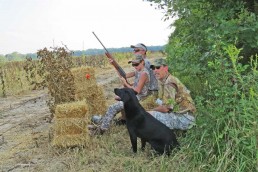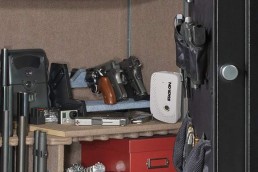Getting a Grip on Shotgun Stock Options
SHARE THIS POST
It’s one of the least discussed aspects of shotgun fit and performance, but the grip design has a big impact on how a piece balances and fits in your hands, and looks to your eyes. And all of that goes a long way toward deciding how well you shoot with it.
Wingshooting, after all, is both science and art. How you feel about a gun, and how it feels as you shoulder it, contributes to your confidence or lack thereof. Hitting a flying target, whether clay or fully feathered, seems simple some days, almost impossible others. Let’s examine your stock options, when shopping for a scattergun.
There are three main designs for shotgun grips: English, Pistol, and Prince of Wales. You will find Internet threads debating topics such as whether a given grip is a “true Prince of Wales,” and you’ll hear other names for grips, like Swan Neck, Half Pistol, and others.
English (straight) stock
An English stock, or English grip, does not have any type of protrusion on the underside of the stock, as with the Pistol and Prince of Wales. Straight stock is a good name for it, because the underside of the stock is “straight.” Less material means less weight, for starters, and a lot of gunners prefer this design for a variety of reasons.
“For one thing,” says David Thiele of Dickinson Arms, “the English stock works well on a shotgun with double triggers. When you have to move your trigger hand along the stock slightly to find the second trigger, it tends to be a smoother process when the stock shape is straight.”
Some shooters simply prefer the look of a straight stock, although Thiele notes this is more common for buyers of side by sides than over and unders or other gun types.
“The main reason English stocks are so common on side by sides,” he says, “is because traditional hunting shotguns were built with them. Tradition is a powerful thing.”
Are you enjoying this post?
You can be among the first to get the latest info on where to go, what to use and how to use it!
Pistol grip
Found on all types of shotguns, from over and unders to pumps and semi-autos, the pistol grip features a protrusion on the underside of the stock, where your rear hand holds the gun when shooting. A true pistol grip is defined by a flat, or nearly flat, “knob” on the bottom. Picture squared-off edges, rather than rounded edges.
Prince of Wales
Picture a pistol grip with softer, rounder corners and you have what’s known as the Prince of Wales. It’s also known as a ‘semi-pistol’ grip. By most accounts, this grip style was named for the Prince of Wales who became King Edward VII, because he had his shotgun collection built with this style of stock.
Pistol grips are found on many hunting guns, and are common on high-end shotguns used in competition. “They give shooters a firm grip,” says Thiele, “and help angle the hand to fully contact the trigger.” Many shooters report that they have a feeling of additional control with a pistol grip.
“Over and unders tend to be mostly built with either pistol grips or Prince of Wales grips,” says Thiele, “whereas pumps and semi-autos tend to be equipped with pistol grips. An over and under balances nicely with a pistol or Prince of Wales. It complements both the balance and look of the gun.”
There are multiple reasons you might choose one grip over the others. “In most cases,” says Thiele, “there’s no right or wrong choice. It all comes down to what feels most comfortable, and aesthetics. People like to get exactly what they want.”
So, which grip style fits your hands, and eyes, best?
MWO
SHARE THIS POST
Did you enjoy this post?
You can be among the first to get the latest info on where to go, what to use and how to use it!
MWO
We believe being outdoors is good. With more than 1,000 articles each year, MidWest Outdoors magazine is all about sharing outdoor experiences with you—where to go, what to use and how to use it… whether you’re close to home or on that trip of a lifetime.




I thoroughly enjoyed the article. It provided insightful and detailed information on the various grip styles available, emphasizing how the right choice can significantly enhance shooting performance and comfort. The clear explanations and practical advice make it an invaluable resource for both novice and experienced shooters looking to optimize their equipment. Thank you for such a well-researched and engaging piece!